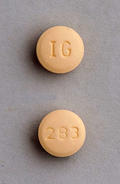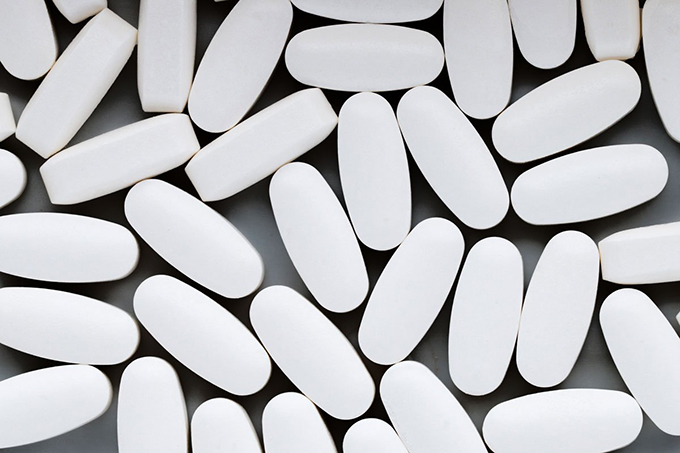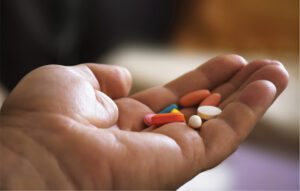
Cyclobenzaprine Zanaflex 5mg
Tizanidine Hcl 4mg Vs Flexeril.

Naltrexone in low doses can benefit a variety of medical conditions. But in lower doses, usually somewhere around 4.
I would imagine it could be but if you go back and look at the original research that Dr Bihari did, he didn't see immunomodulatory effects from LDN until you got to about three milligrams. You could see anti-inflammatory effects at lower doses. You could go lower and see decreased inflammation. Some people have SNPs in their receptors. For example you can have all kinds of SNPs; genetic snips and one of them is they're going to get a paradoxical effect from Naltrexone. It's rare but I've seen a couple of cases. I had a patient and as soon as you stop the Naltrexone the inflammation goes away.
The known or theoretical mechanism of action of LDN, clinical research findings in relation to various medical conditions including pain, autoimmune conditions, cancer, and mood disorders will be discussed. The use of oral naltrexone for opioid addiction requires detoxification from the opioid drug and has been associated with low adherence and high level of relapse back to opioid use after discontinuation of naltrexone. An extended-release injectable naltrexone that only needs to be administered every 4 weeks is now available. He was aware of data indicating that naltrexone led to immune effects, an observation that was merely incidental to its approved use. Side effects such as severe anxiety, depression, irritability, and sleep disturbance hampered the adoption of naltrexone for long-term use. In an effort to find the minimal dose of naltrexone needed to raise endorphins, Bihari and his colleagues did a dose-ranging study comparing 50, 20, 10, 5 and 3.
Are you trying to determine if you can afford low dose naltrexone LDN? LDN is a non-addictive drug that can be used to treat symptoms of inflammation, immune system problems, and pain caused by Lyme disease and other autoimmune disorders. Naltrexone is commercially manufactured in 50mg tablets, but a compounding pharmacy is able to prepare low dose variations, which are needed for treating immune system disorders. Figuring out the cost of low dose naltrexone. Naltrexone was originally marketed to help with opioid addiction. It turns out that LDN is an affordable option for patients to use, in addition to their traditional therapy.
| Package | Per Pill | Total Price | Order |
|---|---|---|---|
| 30 Pills | $2.40 |
$71.99
|
Add to cart |
| 60 Pills | $2.03 |
$121.99
|
Add to cart |
| 90 Pills | $1.83 |
$164.99
|
Add to cart |
| 120 Pills | $1.64 |
$196.99
|
Add to cart |
| 180 Pills | $1.48 |
$266.99
|
Add to cart |
It was approved by the 4.5 mg naltrexone in, at the 50 mg dose. At this approved dose, it works by binding to opioid receptors in the brain and blocking opioids from binding to these receptors. Because of its mechanism of action at this dosage, Naltrexone is used for the treatment of opioid and alcohol abuse. The mechanism of action of LDN is not fully understood, but researchers believe that, when it is administered at bedtime, the body responds to it by increasing endogenous endorphins and enkephalin leading to a boost in the immune system. At Clark Professional Pharmacy we intend to create medicines and provide supplements that improve both the quality and duration of patient lives.
One of the most likely contributors to centralized pain is changes in microglial cell processing. Therefore, it has been postulated that LDN can be used to manage patients with pain resulting from central sensitization due to this relationship. In summary, LDN continues to offer promising results in the management of pain and other distressing symptoms in patients with chronic centralized pain conditions. Naltrexone is an opioid antagonist that was first developed in Normally in a quiescent state, microglia become activated by typical immune triggers such as cell death, peripheral inflammation, and infection. Once activated, they undergo morphological changes and release a broad profile of cytokines and other proinflammatory mediators that are capable of altering response properties in individual neurons and within neuronal networks.

Naltrexone is a drug that, at a normal dose of 50 to mg, blocks the effects of opioids. Research is moving slowly, though, likely because there's not a big financial incentive. Researchers don't yet understand the drug's exact mechanism of action. Some researchers theorize that LDN blocks certain receptors in the nervous system that cause symptoms of fibromyalgia and chronic fatigue syndrome. Research also suggests that LDN may help normalize the immune system, which may be why it appears to help people with autoimmunity and other immune-system illnesses. Researchers say results are best in people with higher sedimentation rates, which indicates an inflammatory response in the body.
Along with its needed effects, a medicine may cause some unwanted effects. Although not all of these side effects may occur, if they do occur they may need medical attention. Some side effects may occur that usually do not need medical attention. These side effects may go away during treatment as your body adjusts to the medicine. Also, your health care professional may be able to tell you about ways to prevent or reduce some of these side effects.
Low-dose naltrexone LDN describes the off-label use of the medication naltrexone at low doses for diseases such as Crohn's disease and multiple sclerosis, but evidence for recommending such use is lacking. Preliminary research has been promising for use of LDN in treating chronic medical conditions such as chronic pain, but at this stage the use of LDN as a treatment is still experimental and more research needs to be done before it can be widely recommended.
Low dose naltrexone is used to treat a variety of chronic conditions that often do not respond to other treatments. The drug has been getting a lot of attention lately from both prescribers and patients due to its demonstrated efficacy and safety and also its low monthly cost.
It works by blocking opioid receptors in the brain and thereby effecting how the brain responds to alcohol and certain narcotic medication. Blocking these receptors also leads to a series of events that effects the immune system in numerous and complex ways.
Naltrexone is an opiate receptor antagonist. The 50mg dose of Naltrexone was approved by the FDA for opioid and alcohol addiction in It is critical to work with a provider or an accredited compounding pharmacy knowledgable in strategies that can help ensure success in using LDN. Optimal dosing is ultimately patient specific. Some patients find success very quickly, while others need to try a variety of dosing strategies while working closely with their provider and pharmacist.

Low-dose naltrexone therapy helps to relieve pain and fatigue associated with fibromyalgia and chronic fatigue syndrome. Naltrexone is a medication that has been used to treat alcohol dependence and opioid-use disorder for more than 30 years. It also explains the side effect of LDN therapy and what to avoid when taking naltrexone. At a normal dose of 50 to milligrams mg, naltrexone blocks the effects of opioid pain relievers and alcohol. It works by binding to opioid and endorphin receptors, preventing the feel-good molecules in alcohol and opioids from attaching. Researchers are not entirely sure how lower doses of naltrexone work to relieve fibromyalgia, chronic fatigue syndrome, and potentially other conditions.